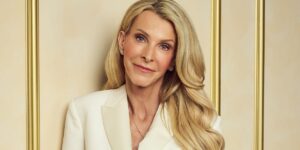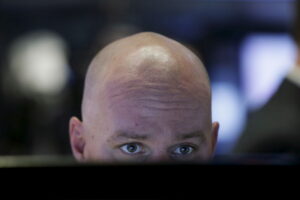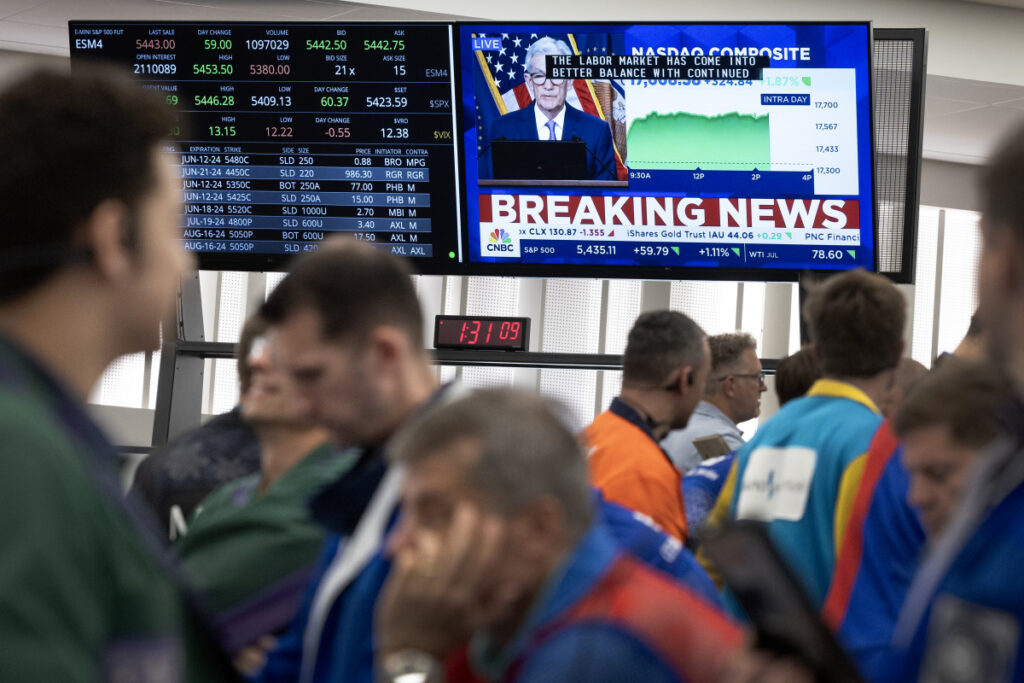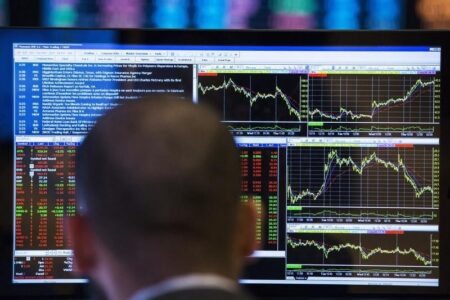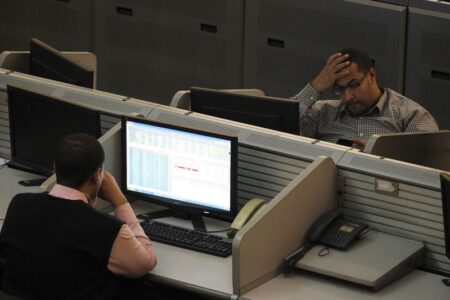ANGELA WEISS/Getty Images
The move suggests that traders expect the Federal Funds Rate to fall to around 3.375% over the next two years, a path that would require two full percentage points of rate cuts over the next 24 months.
Rate bets derived from CME Group’s FedWatch tool, however, suggest traders are looking for the Fed to reach that target rate by early spring.
Economic outlook: It’s all in the dots
The Fed itself, in the Summary of Economic Projections it published in June, estimated a Federal Funds Rate of 4.1% for next year, with a 3.1% forecast penciled in for 2026.
Those outlooks were tied to the view that economic growth would slow to 2% next year and in 2026, with core PCE inflation, the Fed’s preferred gauge, easing to 2.3% and 2% respectively.
Those outlooks are likely to change when the central bank publishes its September rate decision at 2 p.m. U.S. Eastern Time Wednesday.
Sign up for TheStreet’s free daily newsletter.
“The September dot plot should be the most closely watched output of next week’s [Federal Open Market Committee meeting], which is likely to project a path that gets [Federal Funds] in the neighborhood of neutral by year-end 2025,” said Jason Pride, chief of investment strategy and research at Glenmede.
“Rate cuts should be supportive of risk assets like equities, justifying a neutral risk allocation amid this late-cycle economic expansion,” he added.
A neutral rate is presumed to exist when the the Federal Funds target is paired with stable inflation and full employment.
Philadelphia Federal Reserve President Patrick Harker, who is set to retire next summer, recently suggested that a neutral rate could settle at around 3%.
Related: Markets push for big Fed rate cut after inflation reports
Finding that level of balance, however, will require a more precise outlook for the job market, which has cooled notably over the summer and could be suggesting economic weakness in the near term.
“We strongly suspect the Fed will emphasize the uncertainty over the macro outlook and a willingness to be flexible (signaling) they can do more if the data justifies it,” said ING’s chief international economist James Knightley. “We suspect the Fed will maintain its long-run forecast for the [Federal Funds] at 2.8%, having raised it to that level in June.”
Investors may be pricing in ‘Goldilocks scenario’
However, further job losses over the coming months alongside a notable move higher in the headline unemployment rate could stoke recession concerns heading into next year and firmly shift the Fed’s focus from inflation pressure to labor-market weakness.
What’s worth observing in that scenario, however, is that corporate earnings are forecast to improve both this year and next, with collective 2025 profits expected to rise by 15.3%, according to LSEG data.
Rising corporate profits set against declining Treasury yields is a rare market condition that bodes well for the performance of a classic 60/40 portfolio. Bond prices, which move inversely to yields, can improve while stock prices can extend their long-term rally.
That could explain why the S&P 500, fresh off its best week of the year, is less than 1% from the all-time high it printed in July.
Related: Gas prices are plunging and it’s bigger news than you think
“Investors appear to be pricing in a Goldilocks scenario of cheaper borrowing costs, with more rate cuts to come, in an economy which shows few signs of a hard landing or recession,” said David Morrison, senior market analyst at London-based Trade Nation.
“If so, then they may prove to be overoptimistic. After all, core inflation remains sticky, and still some way above the Fed’s 2% target, [and] there’s a danger that the employment situation could continue to deteriorate at an accelerated rate,” he added.
Best of both economic worlds?
Focusing on the bond market, and its role in the 60/40 portfolio, Saxo Bank strategist Althea Spinozzi says Treasury yields might be overestimating the likelihood of recession while underpricing the risk that inflation could reaccelerate.
Several factors, including rising food prices and easier access to credit, could lead inflation to resurge, she argues, citing data from the St. Louis Fed that signals “near 100% probability that headline PCE inflation will exceed 2.5% over the next year.”
“If inflation picks up again, bond yields could rise, which would hurt Treasury prices,” she added. “Given the market’s current focus on downside risks, the possibility of a return to inflationary pressures seems to be underappreciated.”
On the stock side of the portfolio, LPL Financial’s chief technical strategist, Adam Turnquist, is also seeing reasons to be cautious.
More Economic Analysis:
“What has stood out over the last several weeks is the shift toward defensive leadership,” he said in a recent update. The report noted sectors such as consumer staples, utilities and health care were outperforming the broader S&P 500.
“This marks an important character change in this market as technology, semiconductors, and more cyclical sectors have started to lose their leadership status,” he added.
“Building relative strength in more defensive sectors suggests investors are losing risk appetite and rotating toward more recession-proof or less volatile areas of the market — not the type of leadership you want to witness in a recovery period toward the prior highs.”
Related: Veteran fund manager sees world of pain coming for stocks
Read the full article here



